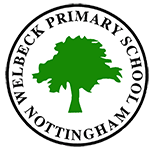Year 3 Maths Objectives
Using and applying mathematics
Solve one-step and two-step problems involving numbers, money or measures, including time, choosing and carrying out appropriate calculations
Represent the information in a puzzle or problem using numbers, images or diagrams; use these to find a solution and present it in context, where appropriate using £.p notation or units of measure
Follow a line of enquiry by deciding what information is important; make and use lists, tables and graphs to organise and interpret the information.
Identify patterns and relationships involving numbers or shapes, and use these to solve problems.
Describe and explain methods, choices and solutions to puzzles and problems, orally and in writing, using pictures and diagrams.
Counting and understanding number
Read, write and order whole numbers to at least 1000 and position them on a number line; count on from and back to zero in single-digit steps or multiples of 10.
Partition three-digit numbers into multiples of 100, 10 and 1 in different ways.
Round two-digit or three-digit numbers to the nearest 10 or 100 and give estimates for their sums and differences.
Read and write proper fractions (e.g. , ), interpreting the denominator as the parts of a whole and the numerator as the number of parts; identify and estimate fractions of shapes; use diagrams to compare fractions and establish equivalents.
Knowing and using number facts
Derive and recall all addition and subtraction facts for each number to 20, sums and differences of multiples of 10 and number pairs that total 100.
Derive and recall multiplication facts for the 2, 3, 4, 5, 6 and 10 times-tables and the corresponding division facts; recognise multiples of 2, 5 or 10 up to 1000.
Use knowledge of number operations and corresponding inverses, including doubling and halving, to estimate and check calculations.
Calculating
Add or subtract mentally combinations of one-digit and two-digit numbers.
Develop and use written methods to record, support or explain addition and subtraction of two-digit and three-digit numbers.
Multiply one-digit and two-digit numbers by 10 or 100, and describe the effect.
Use practical and informal written methods to multiply and divide two-digit numbers (e.g. 13 3, 50 4); round remainders up or down, depending on the context.
Understand that division is the inverse of multiplication and vice versa; use this to derive and record related multiplication and division number sentences.
Find unit fractions of numbers and quantities (e.g. , , and of 12 litres)
Understanding shape
Relate 2-D shapes and 3-D solids to drawings of them; describe, visualise, classify, draw and make the shapes.
Draw and complete shapes with reflective symmetry; draw the reflection of a shape in a mirror line along one side
Read and record the vocabulary of position, direction and movement, using the four compass directions to describe movement about a grid.
Use a set-square to draw right angles and to identify right angles in 2-D shapes; compare angles with a right angle; recognise that a straight line is equivalent to two right angles.
Measuring
Know the relationships between kilometres and metres, metres and centimetres, kilograms and grams, litres and millilitres; choose and use appropriate units to estimate, measure and record measurements.
Read, to the nearest division and half-division, scales that are numbered or partially numbered; use the information to measure and draw to a suitable degree of accuracy.
Read the time on a 12-hour digital clock and to the nearest 5 minutes on an analogue clock; calculate time intervals and find start or end times for a given time interval.
Handling data
Answer a question by collecting, organising and interpreting data; use tally charts, frequency tables, pictograms and bar charts to represent results and illustrate observations; use ICT to create a simple bar chart.
Use Venn diagrams or Carroll diagrams to sort data and objects using more than one criterion

